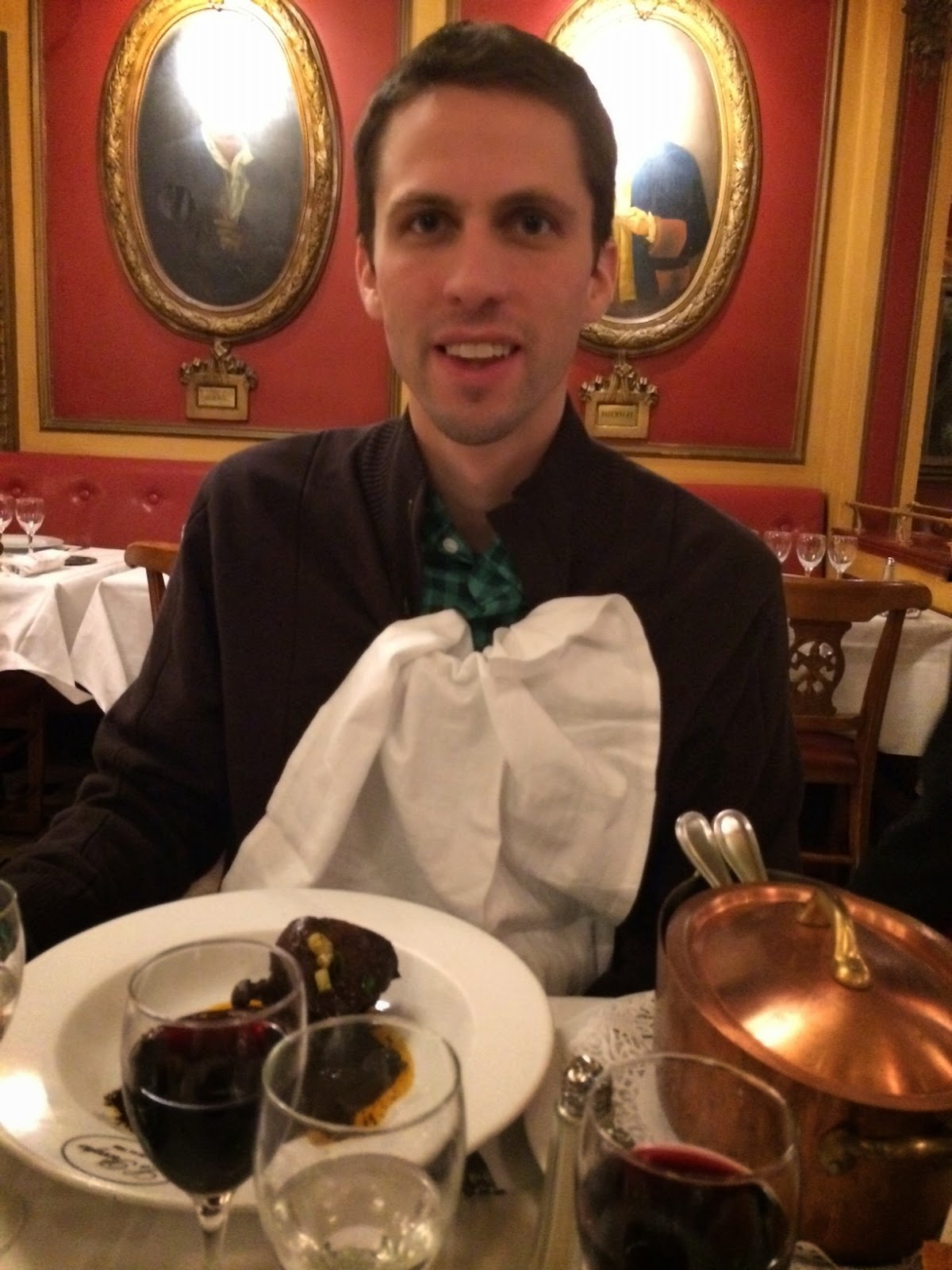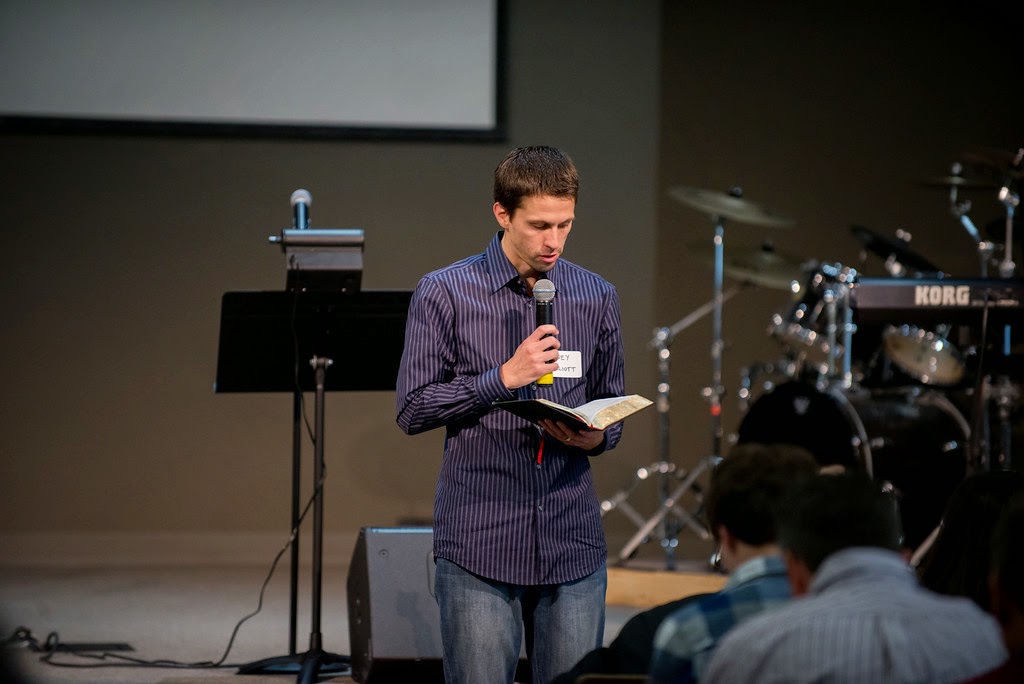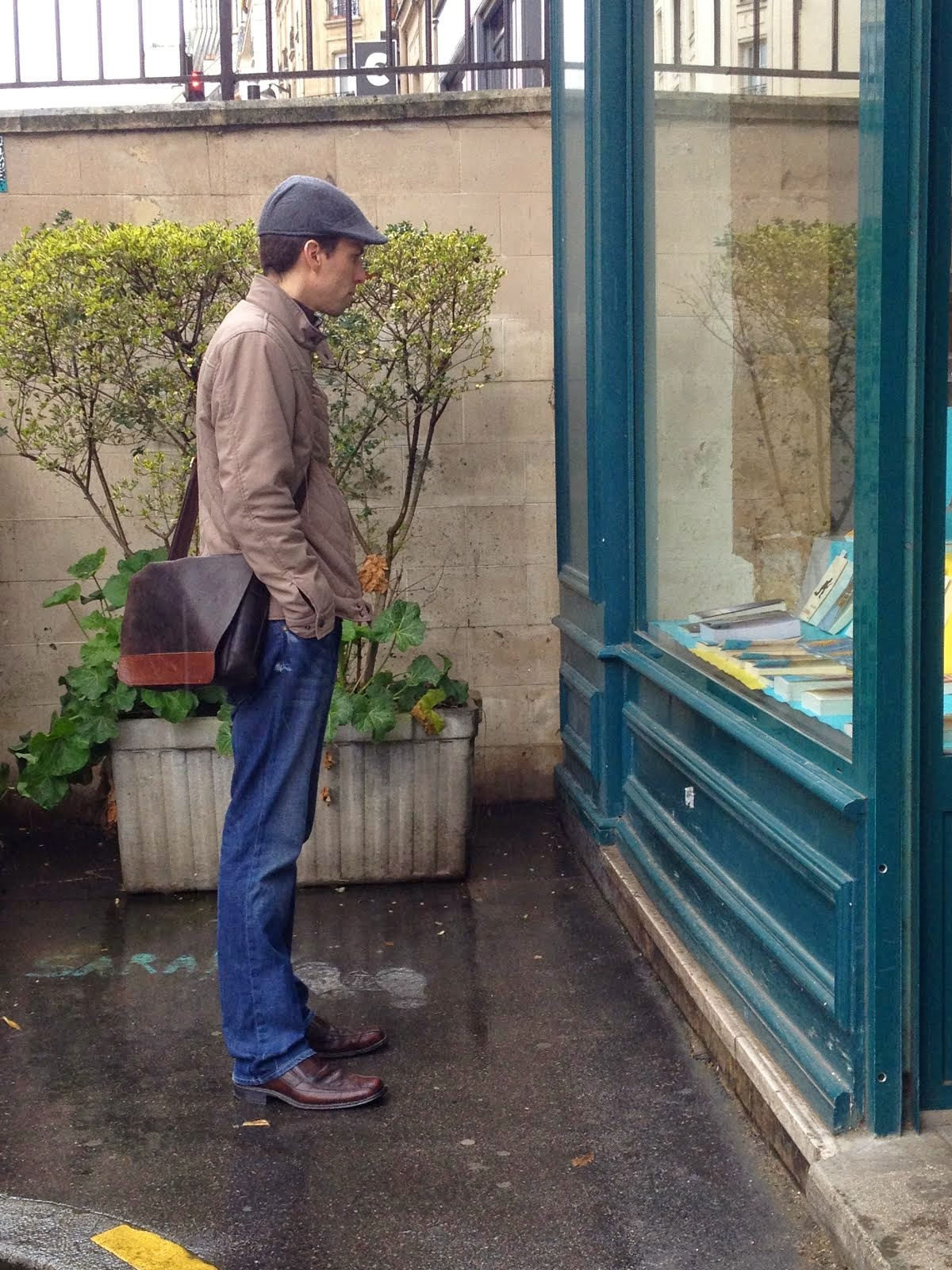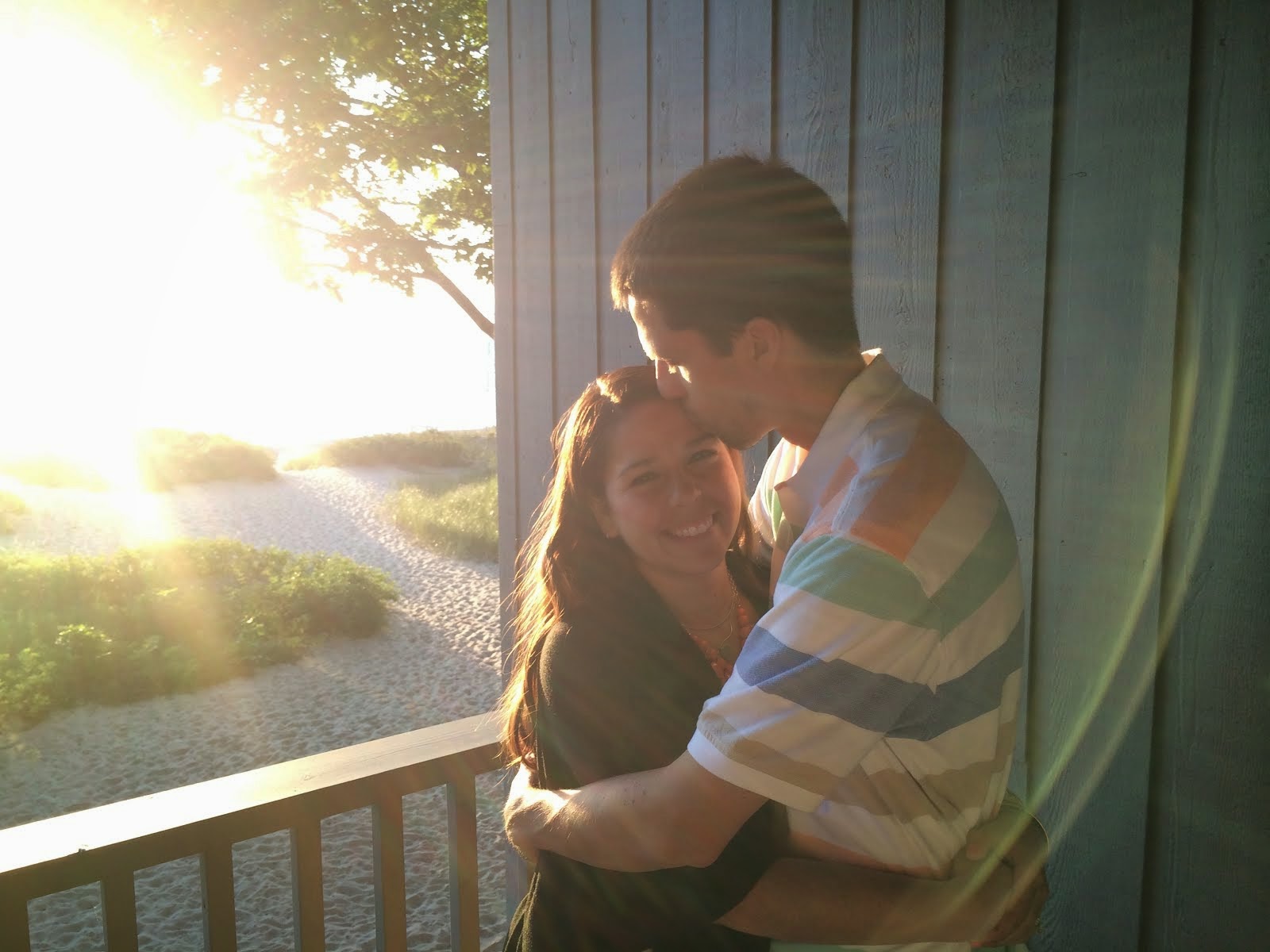CHURCHES
As I look back at my pictures, when it comes to churches, I am a little disappointed. From the outside, or on the inside, the pictures don't do them justice; not to the architecture, the splendor, the age, the size, the pillars, the stain glass, the carvings, not to anything. I have only been to England, Scotland, and now France in Europe, but I'm convinced that old churches and cathedrals are one of the most unique and powerful things to see. Even for people who have never actually worshiped in a church context authentically, don't know Jesus, or would not consider going inside a church except as a tourist. Just like pictures don't do justice to the buildings themselves, the buildings don't do justice to God's glory and splendor, yet I believe that was their intention. And I think even unchurched people see and understand that, and appreciate it.
Is God pleased at the grandeur of these structures? Have locals been inoculated by the size and the number of them in cities like Paris? Does authentic worship happen in these places? Is the biblical gospel preached from these pulpits? All questions that will continue to bounce around in my mind.
The three pictures directly above are all of the Notre Dame, which is impressive. We walked around the outside of this monstrous church (the gargoyles justify my use of "monstrous" in reference to a church) on our first morning, and then walked inside on our second morning when it was less crowded. Our hotel location was ideal and allowed for this. It occurs to me now, after seeing this famous Gothic cathedral, that it is strange that old and beautiful churches in Europe have become major tourist attractions. Is that not ironic? What are the points of interest? Well, with the Notre Dame, you've got the architecture, which is amazing. I do not appreciate architecture as I should, but it is clear that the intricacies and scope of this structure is unmatched. Then you've got the history: originally completed in 1345; Henry VI crowned there in 1431; Mary Queen of Scots married 1558; coronation of Napoleon in 1804; plundered during the French Revolution; restored in the 19th century; etc. But, I wonder, what about gospel history? How many people were saved by the blood of Jesus in this building?
What did the men who stood behind these pulpits say? Were they clear that Jesus Christ himself said that he is the only way to the Father? Did they describe the desperation portrayed in the man in the painting in the picture above? How did the proclamation of the gospel coincide with these historic events? Did Napoleon hear the gospel? Did he believe?
I am looking at church buildings
differently after this trip, especially older ones, in cities and in small
towns. I appreciate them more. I would like to contribute to others seeing then
differently, more positively, also. Nowadays, I think, when someone sees a
church building, or even several church buildings within a close proximity,
they see the abuses of the church; the hypocrisy, the legalism, the rituals.
Or, they see the building as an indicator of institutionalism, dry or dead
orthodoxy, or exclusion, all of which were never meant to be what the community
of God was bound to.
When I see a church building, especially
an old church in the heart of a city, or a smaller church in the middle of
nowhere in the countryside, I see what I think was always meant to be seen,
namely, a beacon of light for the surrounding community; a place where the
gospel is spoken and lived and where hope is offered to those who need it most
(which is all of us); a safe place where lives are shared without judgment, but
also an uncomfortable place where vulnerability is necessary for change, which
is necessary for joy. Even in a church building that consists of a congregation
that is not growing, perhaps a pastor or ministry that does not preach the
gospel or believe completely in the Bible, I see these things.
When I see a church, when I see a steeple, peering out between buildings as is the case so often in Paris (see picture above), I see hope. I see light in a dark world. I can’t change every church that is
dying, unbiblical, or going astray from what God intends for them. I know that
many of the churches I see in Europe and small town America fall into one of
these categories. But what I can do, maybe, is celebrate the church in such a
way that the very presence of a building (but not only a building of course!)
can be seen as hope and light in a community and a world that needs exactly
that. What if I could tell a person who is hurting that the existence of that
old church down the street (the very existence!), even though the people in
that church may not understand the Bible or the gospel very well, is evidence
that God is gracious, and that He cares about our pain, He shared in it, and He
offers hope because He came down to us and lived the life we should have lived,
died the death we deserved the die, and rose from the dead conquering the
ultimate root of our pain, forever! And He commissioned his people to bring
that hope to the world, community by community, local church by local church,
steeple by steeple. The presence of a church building is proof of the gospel.
Do you see churches that way?
Backing up a little in the timeline of our trip, the above pictures are of the famous Westminster Abbey. The amount of history in this place is staggering. I mean literally you should not walk straight. The physical remains of Edward Longshanks, Henry VII, Elizabeth I and Mary Queen of Scots, not to mention poets and authors from Charles Dickens to Charles Darwin. William the Conqueror was crowned here in 1066. Spiritually, this place was a central location in the transition from Roman Catholicism to Protestantism during the Reformation, creating a split between the Church of England and the authority of Rome. Queen Elizabeth II coronation. Princess Diana funeral. The "Royal Wedding" of 2011. Truly, this place is amazing. "The tombs and monuments speak both of human dignity and achievement and of the Christian confidence in life after death." And, it is a living church. Is this same confidence clear in regular worship there? Is it proclaimed where this confidence comes from?
Moving to Guildford and surrounding areas, the above picture is of St. James Church in Shere, England. Yes, that graveyard is the graveyard that Cameron Diaz awoke in her cab and said, "This can't be it", in the movie The Holiday. I hesitate using that reference to relate, but I imagine it worked for many. Know that the history in this church is much more relevant than the setting of a movie.
I'm not sure if you can see this picture very clearly, but it is posted in the back of the church and it has an engraving of the name of every Rector at the church since 1270. The church is said to go back earlier than that. A running list. Did you catch that? 1270. One congregation, 744 years, 42 pastors. That is amazing. Compare it to the church you go to, or a church you have gone to. Imagine, the impact that God has had through this one local body of believers. Same town, dozens of generations, all of which born into sin and desperate for the Savior.
Now, some of the history of this church is as concerning as it is fascinating. Have you ever heard of the concept of an anchorite in medieval times? I will let you read these letters, and perhaps you can make as much sense of it as me:
You could also just go to the internet (the one with email) and, using the Google machine, search "anchoress of Shere". But this way you know I was there. Also of note in this church is a chest from the 13th century that is thought to have been for storage of alms to aide poor Crusaders. This chest was just sitting in the front of the church. I have seen less valuable and more guarded furniture at an antique store. This thing was just in the corner with a discarded copy of last week's bulletin on top of it. Welcome to England. I hope I am getting you into history if you're not already. Most chests you see in a church, or an antique store, or maybe your house, if you're lucky are from your grandmother's house and maybe were made in the 1800s, and stored clothing garments, jewelry, or old parchments or something. And if it has family history it is probably in the center of a room, or well protected in a safe place. This chest at this church was from 800 years ago, was used for aid for one of the most significant, yet shameful, periods in the history of Christianity, and it was just in the back of the church without even a marking.
I want to worship at this church someday. It could be interesting, but still, I want to. What blows my mind is that this church is considered old and drenched in history beyond comprehension to us as Americans. We just don't have anything like it. But to God? A day is like a thousand years, and a thousand years is but a day.
We spent our second day in Paris walking around St. Germain and the Latin Quarter. My wife asked me the other night which day in Paris was my favorite. I hesitated to say our second day only because it was raining. Now, dry and warm inside my house in Fishers writing this, with absolutely no memory of the rain, I say Tuesday without any hesitation. Much of the reason for that I have covered about in the Culture and Cuisine sections; it was on this day we strolled around without much of an agenda, and fell into markets, cafes, bookstores, chocolate shops, boutiques, a classic French bistro on the Rue de Mouffetard for lunch, and the oldest restaurant in Paris for dinner. It really was perfect. But, on top of that, walking around these classic Parisian neighborhoods, we would approach (and walk by if we weren't careful) amazing old churches. We'd turn a corner, and boom, there was St. Sulpice (second picture above). I was amazed by this church and the square in front of it. What of the history of this church? How has God moved here?
And then there was St. Germain des Pres, the oldest church in Paris (first picture above). It was outside here we stopped at a famous café and Katie blessed that aspiring artist. We went inside this church, and I wish I could capture for you the beautiful opera singing practice that accompanied us as we walked around the back of the altar. But I can't. You'll have to go and hope they are practicing again when you go inside.
Find the Gare Du Nord (right side of the map). Now find the Sacre-Coeur (top left). It is clear there are roads between them, yes? How hard could it be? Well, our journey began at the Gare Du Nord late afternoon our last night (on a mission that was sadly unsuccessful). Knowing how close it appeared to be, I said for sure we were going to see this church. I had read a little about it (not enough it would turn out), and we had seen it at night atop the Arc de Triomphe two nights before and were blown away by how it seemed to tower over the city.
I am going to be honest with you: sometimes I don't process the obvious. In this case, the fact that it "towered over the city" did not register, and so it did not occur to me that it would not be at the same altitude as where we were coming from, namely, the streets of Paris. Also, these "streets of Paris" were a tad different than those of our friendly Latin Quarter. That is to say, not to be judgmental, but the people around these parts seemed up to no good. We decided in route we would find a dinner spot close to "home" on this our last night (and we did, on the same street as our hotel, and it was fabulous #FrenchOnionSoup). But I digress.
I held my wife tight, and we walked via the map in the general direction of the Sacre-Coeur. Gradually, it became apparent that we were climbing. Shortness of breath, aching legs, etc. Then, the streets in real life did not seem to match the streets on the map. But I was trusting my nose (which normally is terrible at direction, not to mention regular smelling). Then, the area appeared residential. Then, well, here is a picture looking down after climbing what was definitely a residential street. At the time of taking this picture, we had no idea whether any road connected further up the hill, or if it did, whether it would take us to the church (which we had at least seen through the buildings once, before losing it again).
Long story short, we found that it wasn't a dead end. We winded around a little more, passed a few locals taking out their trash, and then this:
Yes, still some stairs to climb, and, actually this was the back of the church, which at first appeared closed off and empty, but...we had made it. We walked around to the front of the church and saw the amazing building, the people, and the city. It was breathtaking.
Part of me wants to know the history of this church and in this church before telling our story of visiting this church. I know that Pope John Paul II had visited. But another part of me predicts that I will be a little disappointed. So, instead, in conclusion to this recap on a fabulous trip, I want to reflect briefly on our journey to this church, and the beauty upon our arrival, as a synopsis of the reward and purpose of travel. I could let my imagination run wild here and stretch out a comparison beyond what would make sense. Maybe I should later. But for now, I think our approach to this church represented well what I believe to be a healthy approach to travel.
It wasn’t easy, it wasn’t entirely
planned, and it wasn’t completely safe, but it was worth it. When I say it was
“worth it”, what do I mean? Worth the view? Worth the pictures? Worth the
memory, or the experience? Yes to all of these things. But I mean also
something less about us I think.
We couldn't stay at this breathtaking place forever, just like we couldn't stay in Paris, or Guildford, or London forever. It would have even been nice to stay just a bit longer. It will be great to go again, God willing. But the point was not to stay. The point was to go, and to come back, and for something to happen in the process. What happened?
We had fun, yes. We enjoyed temporary pleasures, like food and drink. We saw amazing sights with our eyes that are now in our memories. We learned a lot, about history, culture, geography, language, and people. We celebrated an anniversary and grew closer together in our marriage. Anything else? Are we closer to Jesus? What would that look like?
As I reflect on that view beyond the Sacre-Coeur, looking over all of Paris, and the journey to get there, I am convinced that the answer to that last question is absolutely yes. We were, and we are now still, closer to Jesus. The same thing applies to the entire trip. But what does that mean?
God is not the God of the Jews only, Paul says. God is not the God of the Christians only, I would add. He is the one living God of the universe. Jesus Christ is the only name under heaven by which anyone can be saved, but God is God over and among those who have not yet believed also. God is the God over the aspiring artist. God is God over that bookstore owner. God is God over the Scottish men we talked to briefly at The Red Lion pub in England, who were not the first or the last to warn us of pickpockets in Paris (none of whom we encountered). Etc.
The secular Englishman and Parisian, perhaps no longer amazed by or appreciative of the wonders of their culture and history, desensitized to the taste and uniqueness of their food, espresso, tea, or wine, and inoculated to the reality of God or the concept of church community because of the ubiquity of breathtaking buildings and architecture all around them - God is God of them also. And in His sovereignty, He allowed us to rub shoulders with some of them. I know more the heart of my God by knowing more of the diversity of the people He is God over, some of whom by His grace are His children, whether they know it yet or not. I hope that some people in the places we visited can say, now or in the future, that they know God a little more also because of us and our brief presence among them.
We did not share the gospel with our
words, and we should have. But if God is the God over the Englishman in the
pub, or the Parisian in the café, or even the Asian tourist in the Notre Dame
or the Louvre, all of whom communicate very differently than us, is he not also
the God over our neighbor? Or our co-worker? Or our high-school friend? There
are still barriers with communicating the gospel with these people in our
lives, but language (or even accent) is not one of them. Jesus draws us to
Himself by showing us that His grace in the gospel comes to us on its way to
someone else, and areas of common ground to improve communication with people
are many. Sometimes it takes a trip across the world to be reminded of
that.














































